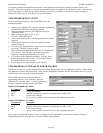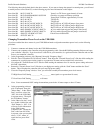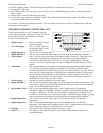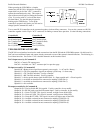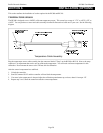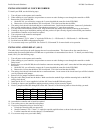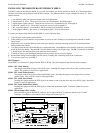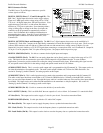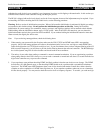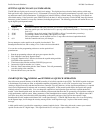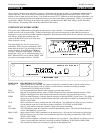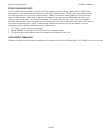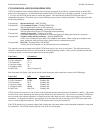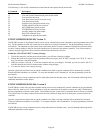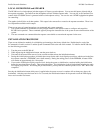
Pacific Research Solutions RI-300e User Manual
Page 24
SECTION 7 ADJUSTMENTS
Adjusting the audio levels in your controller is very important, in order to avoid clipping or distorted audio. In this section you
will find various features in the controller to help you through is process.
The RI-310 is shipped with audio levels already set for the Vertex repeater, however final adjustments may be required. If you
are installing a RI-300 or checking the RI-310 audio levels, use the following procedure.
Warning: Refer to section 8, Initialization procedure. When a full controller initialization is performed all digital pot settings
are returned to their default settings. Do not perform the initialization procedure at this time. During full controller
initialization, all system settings, user commands, macros, messages, and digital pot settings will be returned to their defaults.
While holding down the initialization button, apply 12 VDC power. After all the LED’s are turned on, you can release the
initialization button and only the system data will be modified. If you continue holding the initialization button for more than
fifteen seconds, the digital pots will be reset.
Note: If you are having startup problems, check the following items.
1. When entering your password for the first time, make sure the COS, CTCSS and DTMF status LED’s are operating
properly. Most of the startup problems will relate to discriminator audio level too low, too high, too much DTMF twist
and/or audio distortion (or CTCSS level too high or low). If your discriminator does not have adequate filtering of the 455
kHz (second IF frequency), you will have to provide for this filtering between the radio and controller. The RI-300 design
has a wide dynamic range for all of the decoders and should work in most conditions.
2. The un-key of your radio when sending a command is a normal command termination. If you are experiencing a problem
when getting started or the COS is always on, you can send a command as normal and wait about 3.5 seconds from the last
digit for the controller to try to process the command.
3. If you experience some problems decoding DTMF, the likely problem is that the tone levels are out of range. The DTMF
decoder has a 30+ dB dynamic range, so that decoding DTMF should not be a problem with a reasonable discriminator
input level. The DTMF status LED illuminates when a tone is first decoded and remains lit until after, either a function
complete or at the completion of a DTMF Inter-digit time-out. If you experience problems where one row or column that
did not decode properly. You may need to check the receiver level or frequency response. To test this, you send one digit



